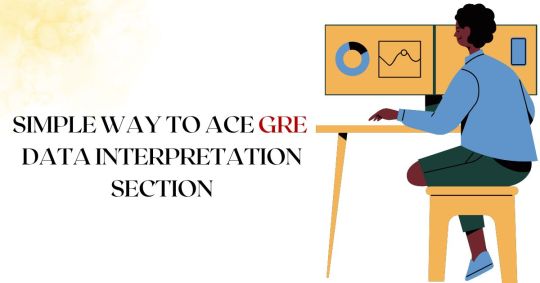#Amazing Shortcut for Data Interpretation GRE
Explore tagged Tumblr posts
Text
Simple Way to Ace GRE Data Interpretation Section
Introduction
For a student, GRE is a challenging exam. But it's not as difficult as it seems to be. If you follow the right strategy then you can crack the exam with ease. These strategies are very effective and will help you achieve top scores in the GRE Data interpretation section.]

What is GRE Data Interpretation?
GRE Data Interpretation questions are designed to test your ability to draw conclusions from data, not just answer factual questions. You will be presented with one or more tables and asked to interpret them in order to answer the question(s) provided.
The data interpretation section is made up of 30 questions: 20 quantitative comparisons and 10 table analysis questions. The total time allotted for this section is 35 minutes, which means you should spend no more than five minutes per question if you want to finish on time!
(Read more: ACE YOUR SCORE IN GRE FOR YOUR ADMISSION INTO TOP UNIVERSITIES OVERSEAS!)
How to improve GRE Data interpretation?
Practice, practice, practice.
Analyze the question, then decide what you want to say.
Understand the concepts involved in the question.
Use the flowchart to solve the question.
Use the plug-and-play technique to solve the question (if applicable).
Use follow-ups if necessary (if applicable).
Trick 1 - The approach
The approach is the most important aspect of solving any data interpretation question. The approach helps you understand the question in the best possible way, which means that if your approach is wrong then every step after it will be incorrect too.
The following steps should be followed for each and every data interpretation question:
Identify what type of data representation has been given to you (i.e., table, graph, etc.)
Identify whether there are labels or not on axes/tables/figures
If there are no labels on axes/tables/figures then label them yourself based on your understanding of what they represent
(Read more: GRE Preparation Tips 2023 – Know How to Score 325+ in GRE)
Trick 2 - The Flowchart
The flowchart is a very useful technique for data interpretation questions. You can use it to solve any question, and sometimes it will even help you solve a question in the easiest way possible!
The flowchart is a great way to understand the problem. It's like having an illustration right there on your screen or paper that shows how each piece of information relates to each other piece of information (and how they all fit together).
Trick 3 - Plug and play
Plug and play is a technique that enables you to solve a GRE data interpretation question by plugging in the given data into the answer choices and then picking the best answer. This is an easy way to solve GRE data interpretation questions, but it is not always possible for some questions because of their complexity or ambiguity.
The steps involved in plug-and-play are:
Identify what type of question you're dealing with (multiple choice or sentence completion). If it's multiple choice, then there will be four answers given; otherwise, there will only be two options available for selection as answers
Choose an answer based on how well it fits into each scenario described by the passage given (i.e. if one paragraph says something about improving efficiency while the other talks about increasing profit margins, then choose between these two options based on which one sounds more feasible)
Trick 4 - The follow-ups
Follow-up questions are the ones that you have to answer after you've given your answer to the main question. You can get follow-up questions in Data Interpretation questions, but they may also come under other types of questions on the GRE exam as well.
(Read more: How to Achieve High Scores On GRE Quantitative Section)
Follow-up questions are usually easy if you know what to look for and how to tackle them. These are mostly asked with respect to data provided in a graph or table, where there is no direct relationship between two variables (e.g., one variable increases while another decreases). For example: "Which of these two numbers is farther from zero?" or "Which number has the greatest absolute value?" You should review the answers to this quiz before submitting your results because if you give incorrect answers, your score will suffer.
Conclusion
In conclusion, we can say that the shortcut is very useful and helpful for students. It helps them to solve problems quickly without wasting time thinking. By taking GRE Coaching you will know about shortcuts and tricks.
#Amazing Shortcut for Data Interpretation GRE#How can I improve my GRE data interpretation#The Complete Guide for how to solve GRE Data Interpretation problems#data interpretation gre tips and tricks#hard data interpretation questions#how to solve difficult data interpretation questions
0 notes